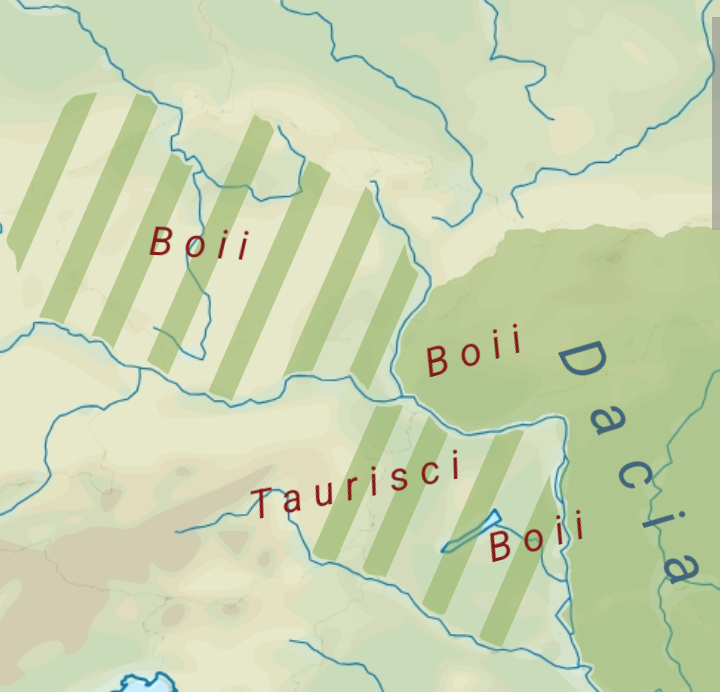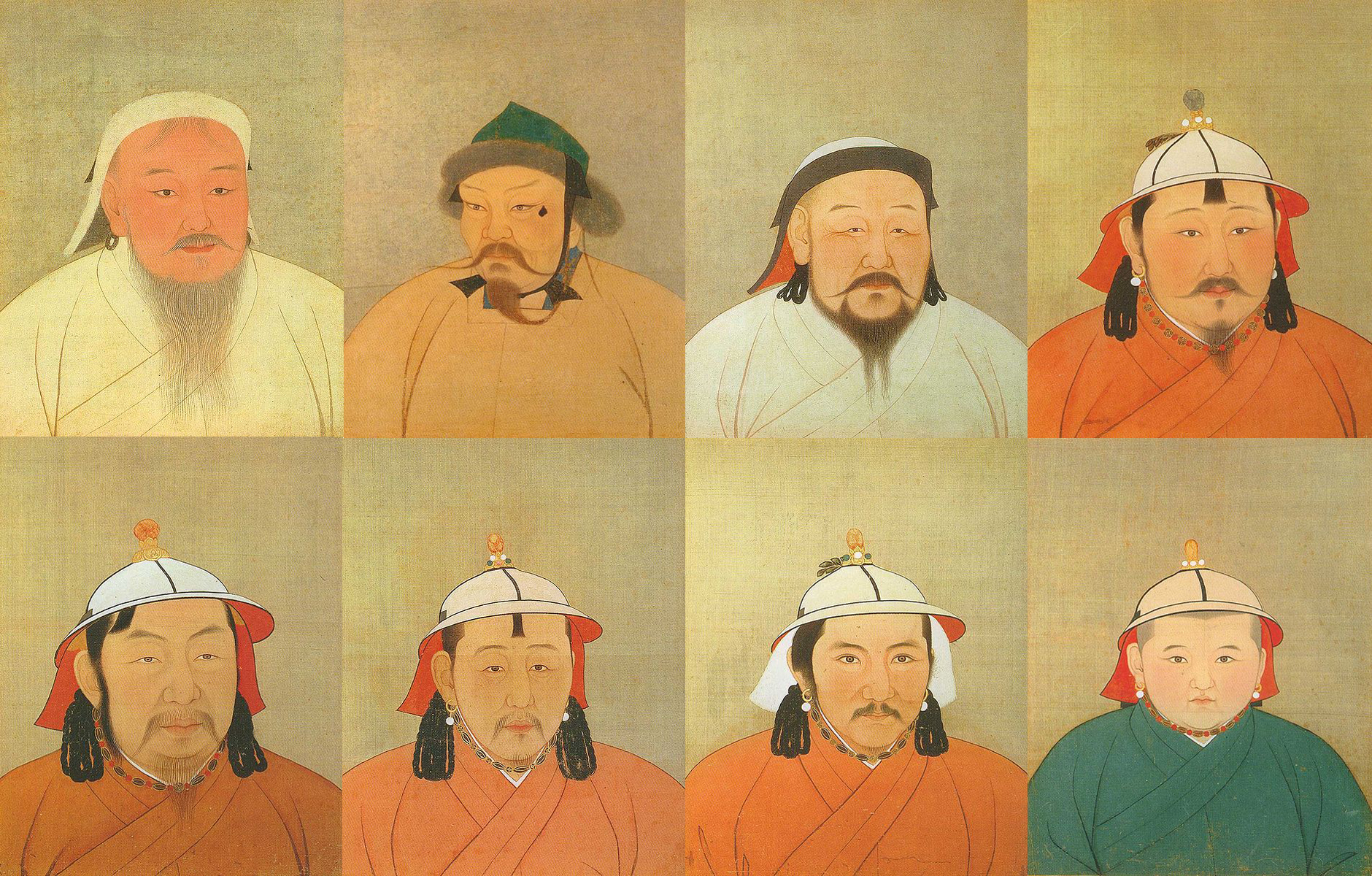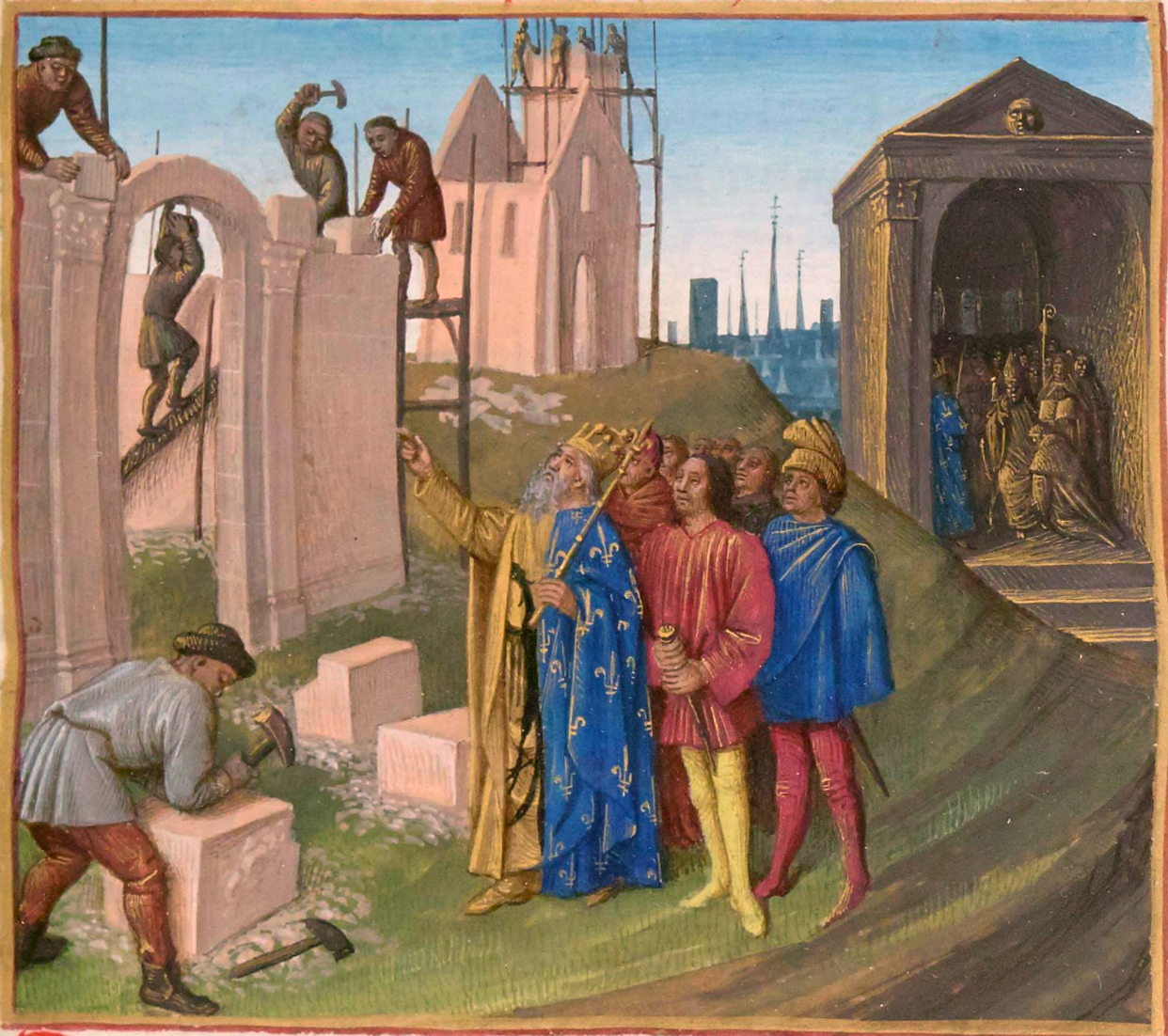|
De Pippini Regis Victoria Avarica
''Rythmus'' (or ''Carmen'') ''de Pippini regis Victoria Avarica'' ("Poem ongof king Pippin's Avar victory"), also known by its incipit as ''Omnes gentes qui fecisti'' ("All peoples whom you created"), is a medieval Latin encomium celebrating the victory of King Pepin of Italy over the Avars in the summer of 796. It is associated with an experimental trend of the Carolingian Renaissance and, though its author, probably a cleric, is unknown, is associated with the Veronese "school" of poets, one of whom, at the same time, produced the '' Versus de Verona'', praising the royal capital of Italy, where it and ''De Pippini'' were probably written.Godman, 31. ''De Pippini'' is usually classified as a "popular ballad", though it does not fit stereotypes of either popular or learned literature and has been likened more to a ''chanson de geste''. It contains some vulgarisms in grammar, orthography, syntax, style, and form, but much of its hybrid nature is probably purposed. Despite this, ... [...More Info...] [...Related Items...] OR: [Wikipedia] [Google] [Baidu] |
Monumenta Germaniae Historica
The (Latin for "Historical Monuments of Germany"), frequently abbreviated MGH, is a comprehensive series of carefully edited and published primary sources, both chronicle and archival, for the study of parts of Northwestern, Central and Southern European history from the end of the Roman Empire to 1500. Despite the name, the series covers important sources for the history of many countries besides Germany, since the Society for the Publication of Sources on Germanic Affairs of the Middle Ages has included documents from many other areas subjected to the influence of Germanic tribes or rulers (Britain, Czech lands, Poland, Austria, France, Low Countries, Italy, Spain, etc.). History The MGH was founded in Hanover as a private text publication society by the Prussian reformer Heinrich Friedrich Karl Freiherr vom Stein in 1819. The first volume appeared in 1826. The editor from 1826 until 1874 was Georg Heinrich Pertz (1795–1876), who was succeeded by Georg Waitz (1813–18 ... [...More Info...] [...Related Items...] OR: [Wikipedia] [Google] [Baidu] |
Pannonia
Pannonia (, ) was a Roman province, province of the Roman Empire bounded on the north and east by the Danube, on the west by Noricum and upper Roman Italy, Italy, and on the southward by Dalmatia (Roman province), Dalmatia and upper Moesia. It included the modern regions western Hungary, western Slovakia, eastern Austria, northern Croatia, north-western Serbia, northern Slovenia, and northern Bosnia and Herzegovina. Background In the Early Iron Age, Transdanubia was inhabited by the Pannonians or Pannonii, a collection of Illyrians, Illyrian tribes. The Celts invaded in the Late Iron Age and Gallo-Roman culture, Gallo-Roman historian Pompeius Trogus writes that the Celts were met with heavy resistance from the locals and were not able to overrun the southern part of Transdanubia. Some tribes advanced as far as Delphi, with the Scordisci settling in Syrmia (279 BC) upon being forced to withdraw. The arrival of the Celts in Transdanubia disrupted the flow of amber from the Balti ... [...More Info...] [...Related Items...] OR: [Wikipedia] [Google] [Baidu] |
Carolingian Historical Texts In Latin
The Carolingian dynasty ( ; known variously as the Carlovingians, Carolingus, Carolings, Karolinger or Karlings) was a Franks, Frankish noble family named after Charles Martel and his grandson Charlemagne, descendants of the Pippinids, Arnulfing and Pippinid clans of the 7th century AD. The dynasty consolidated its power in the 8th century, eventually making the offices of mayor of the palace and ''dux et princeps Francorum'' hereditary, and becoming the ''de facto'' rulers of the Franks as the real powers behind the Merovingian throne. In 751 the Merovingian dynasty which had ruled the Franks was overthrown with the consent of the Papacy and the aristocracy, and Pepin the Short, son of Martel, was crowned King of the Franks. The Carolingian dynasty reached its peak in 800 with the crowning of Charlemagne as the first Holy Roman Emperor, Emperor of the Romans in the West in over three centuries. Nearly every monarch of France from Charlemagne's son Louis the Pious until the pen ... [...More Info...] [...Related Items...] OR: [Wikipedia] [Google] [Baidu] |
Medieval Latin Poetry
In the history of Europe, the Middle Ages or medieval period lasted approximately from the 5th to the late 15th centuries, similarly to the post-classical period of World history (field), global history. It began with the fall of the Western Roman Empire and transitioned into the Renaissance and the Age of Discovery. The Middle Ages is the middle period of the three traditional divisions of Western history: classical antiquity, the medieval period, and the modern period. The medieval period is itself subdivided into the Early Middle Ages, Early, High Middle Ages, High, and Late Middle Ages. Population decline, counterurbanisation, the collapse of centralised authority, invasions, and mass migrations of tribes, which had begun in late antiquity, continued into the Early Middle Ages. The large-scale movements of the Migration Period, including various Germanic peoples, formed new kingdoms in what remained of the Western Roman Empire. In the 7th century, North Africa and the ... [...More Info...] [...Related Items...] OR: [Wikipedia] [Google] [Baidu] |
Jack Lindsay
John Lindsay , FRSL (20 October 1900 – 8 March 1990) was an Australian-born writer. He was born in Melbourne, but spent his formative years in Brisbane. He was the eldest son of Norman Lindsay and brother of author Philip Lindsay. Early life John Lindsay was born on 20 October 1900 in Melbourne, Colony of Victoria. He was educated at Brisbane Grammar School and the University of Queensland under J. L. Michie, from which he graduated with first class honours in Greek and Latin.Gillen, Paul. ''Lindsay, John (Jack) (1900–1990).'' Australian Dictionary of Biography On 27 October 1922 at the district registrar's office, Waverton, he married Janet Beaton, granddaughter of W. B. Dalley. He started his literary career in 1923 as a poet with a book ''Fauns and Ladi ... [...More Info...] [...Related Items...] OR: [Wikipedia] [Google] [Baidu] |
Liturgy
Liturgy is the customary public ritual of worship performed by a religious group. As a religious phenomenon, liturgy represents a communal response to and participation in the sacred through activities reflecting praise, thanksgiving, remembrance, supplication, or repentance. It forms a basis for establishing a relationship with God. Technically speaking, liturgy forms a subset of ritual. The word ''liturgy'', sometimes equated in English as " service", refers to a formal ritual enacted by those who understand themselves to be participating in an action with the divine. Etymology The word ''liturgy'' (), derived from the technical term in ancient Greek (), ''leitourgia'', which means "work or service for the people" is a literal translation of the two affixes λήϊτος, "leitos", derived from the Attic form of λαός ("people, public"), and ἔργον, "ergon", meaning "work, service". In origin, it signified the often expensive offerings wealthy Greeks made in serv ... [...More Info...] [...Related Items...] OR: [Wikipedia] [Google] [Baidu] |
Tarkhan
Tarkhan (, or ; ; zh, c=達干/達爾罕/答剌罕; ; ; alternative spellings ''Tarkan'', ''Tarkhaan'', ''Tarqan'', ''Tarchan'', ''Turxan'', ''Tarcan'', ''Turgan, Tárkány, Tarján, Tarxan'') is an ancient Central Asian title used by various Turkic peoples, Turkic, Hungarians, Hungarian, Mongols, Mongolic, and Iranian peoples. Its use was common among the successors of the Mongol Empire and First Turkic Khaganate, Turkic Khaganate. Etymology The origin of the word is not known. Various historians identify the word as either Eastern Iranian languages, East Iranian (Sogdian language, Sogdian or Saka language, Khotanese Saka) or Turkic languages, Turkic. Although Richard N. Frye reports that the word "was probably foreign to Sogdian", Gerhard Doerfer points out that even in Turkic languages, its plural is not Turkic (sing. ''tarxan'' → plur. ''tarxat''), suggesting a non-Turkic origin. L. Ligeti comes to the same conclusion, saying that "''tarxan'' and ''tegin'' [prince] form ... [...More Info...] [...Related Items...] OR: [Wikipedia] [Google] [Baidu] |
Khagan
Khagan or Qaghan (Middle Mongol:; or ''Khagan''; ) or zh, c=大汗, p=Dàhán; ''Khāqān'', alternatively spelled Kağan, Kagan, Khaghan, Kaghan, Khakan, Khakhan, Khaqan, Xagahn, Qaghan, Chagan, Қан, or Kha'an is a title of empire, imperial rank in Turkic languages, Turkic, Mongolic languages, Mongolic, and some other languages, equal to the status of emperor and someone who rules a khaganate (empire). The female equivalent is Khatun. It may also be translated as "Khan (title), Khan of Khans", equivalent to King of Kings. In Bulgarian, the title became known as ''Khan'', while in modern Turkic, the title became ''Khaan'' with the ''g'' sound becoming almost silent or non-existent; the ''ğ'' in modern Turkish language, Turkish ''Kağan'' is also silent. After the division of the Mongol Empire, monarchs of the Yuan dynasty and the Northern Yuan held the title of ''Khagan''. ''Kağan, Hakan'' and ''Kaan'', Turkish language, Turkish equivalents of the title are common Tur ... [...More Info...] [...Related Items...] OR: [Wikipedia] [Google] [Baidu] |
Reichsannalen
The ''Reichsannalen'' are a class of annals composed anonymously in the Carolingian Empire throughout the 9th century. They first appeared under Pepin the Short in 741 and became ubiquitous at monasteries throughout the empire in the following decades. They were not official court annals, but they often bear the bias of having been written in one '' regnum'' or another. The Reichsannalen are distinguished from earlier and later classes of annals by their coverage of supranational and not just local events; they covered the entire empire. Though usually composed at monasteries, they are contrasted with monastic annals which emphasise ecclesiastical and especially local happenings over those of the larger ''Reich''. Some historians, such as Ranke (''Zur Kritik fränkisch-deutscher Reichsannalisten''. Berlin, 1854) have seen a sheen of officiality in the various annals for the kings whose reigns they cover. The authors of the Reichsannalen show a greater awareness of external affair ... [...More Info...] [...Related Items...] OR: [Wikipedia] [Google] [Baidu] |
Homage (feudal)
Homage (/ˈhɒmɪdʒ/ or ) (from Medieval Latin , lit. "pertaining to a man") in the Middle Ages was the ceremony in which a feudal tenant or vassal pledged reverence and submission to his feudal lord, receiving in exchange the symbolic title to his new position ( investiture). It was a symbolic acknowledgement to the lord that the vassal was, literally, his man (''homme''). The oath known as "fealty" implied lesser obligations than did "homage". Further, one could swear "fealty" to many different overlords with respect to different land holdings, but "homage" could only be performed to a single liege, as one could not be "his man" (i.e., committed to military service) to more than one "liege lord". The ceremony of homage was used in many regions of Europe to symbolically bind two men together. The vassal to-be would go down on their knee and place their palms together as if praying. The lord to-be would place his hands over the hands of the vassal, while the vassal made a short ... [...More Info...] [...Related Items...] OR: [Wikipedia] [Google] [Baidu] |
Tudun
A tudun was a governor resident in a town or other settlement in the ancient Bulgar, Avar or Gokturk empires, particularly those of the Bulgars and the Khazars. The tudun was the personal representative of the imperial government and could function both as an administrator and a diplomat. At times, a tudun would be appointed for a town nominally under another power's control but ''de facto'' within the sphere of influence of the tudun's khagan Khagan or Qaghan (Middle Mongol:; or ''Khagan''; ) or zh, c=大汗, p=Dàhán; ''Khāqān'', alternatively spelled Kağan, Kagan, Khaghan, Kaghan, Khakan, Khakhan, Khaqan, Xagahn, Qaghan, Chagan, Қан, or Kha'an is a title of empire, im .... History of the Turkic peoples Khazar titles Titles of the Göktürks {{CAsia-hist-stub ... [...More Info...] [...Related Items...] OR: [Wikipedia] [Google] [Baidu] |
Aachen
Aachen is the List of cities in North Rhine-Westphalia by population, 13th-largest city in North Rhine-Westphalia and the List of cities in Germany by population, 27th-largest city of Germany, with around 261,000 inhabitants. Aachen is located at the northern foothills of the High Fens and the Eifel Mountains. It sits on the Wurm (Rur), Wurm River, a tributary of the Rur (river), Rur, and together with Mönchengladbach, it is the only larger German city in the drainage basin of the Meuse. It is the westernmost larger city in Germany, lying approximately west of Cologne and Bonn, directly bordering Belgium in the southwest, and the Netherlands in the northwest. The city lies in the Meuse–Rhine Euroregion and is the seat of the Aachen (district), district of Aachen ''(Städteregion Aachen)''. The once Celts, Celtic settlement was equipped with several in the course of colonization by Roman people, Roman pioneers settling at the warm Aachen thermal springs around the 1st cen ... [...More Info...] [...Related Items...] OR: [Wikipedia] [Google] [Baidu] |




